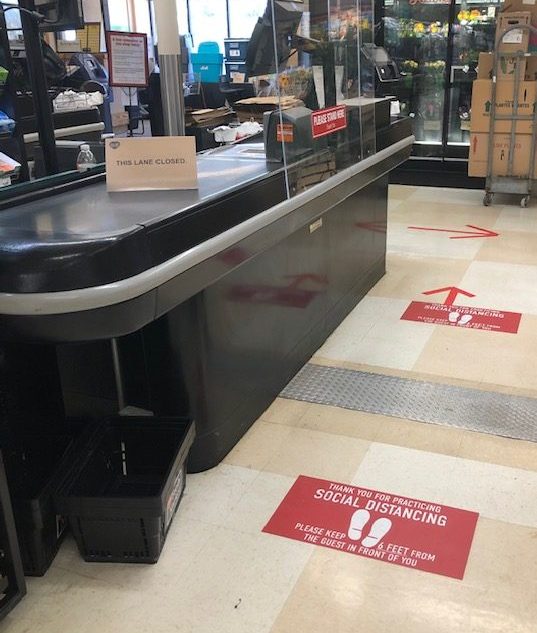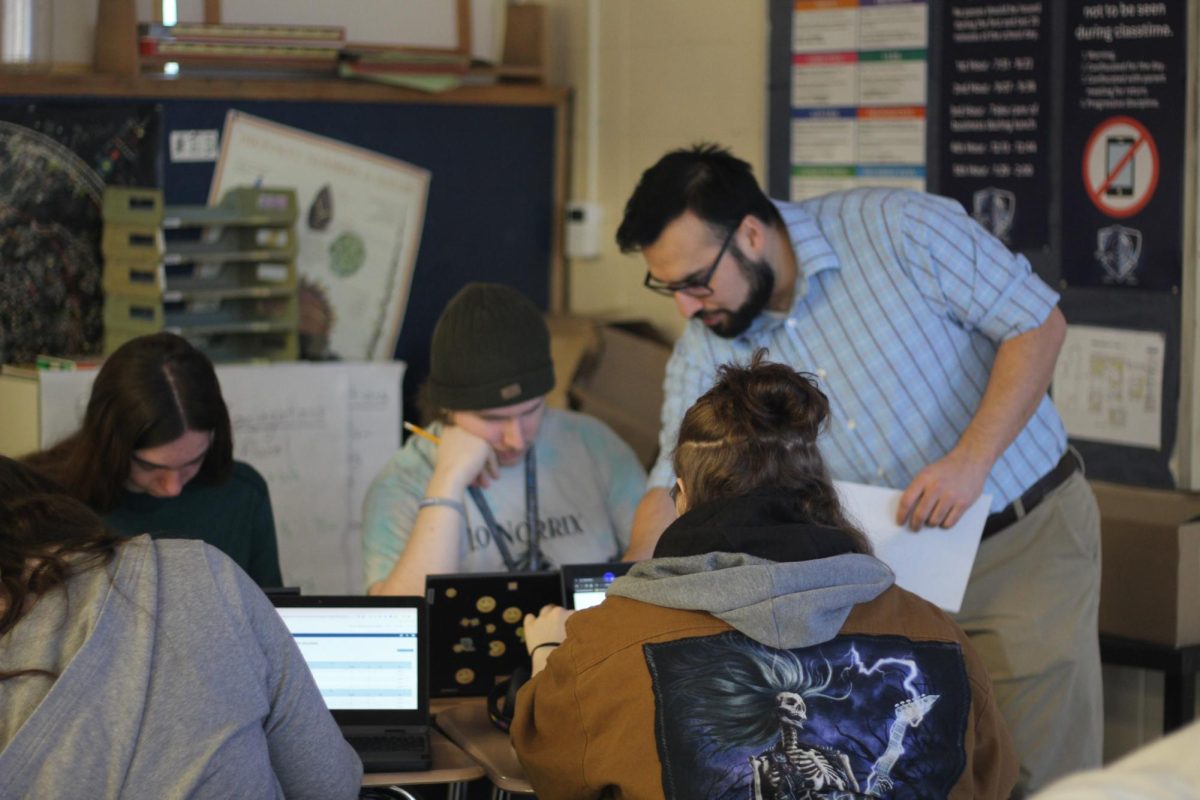The end of quarantine drawing near: What will be the new normal?
Credit: Samantha Shaffer
D&W Fresh Market in Kalamazoo clearly defines social distancing and ensures the safety of staff and patrons.
May 18, 2020
The end of Michigan’s quarantine period is in sight. However, as we get closer to reopening the state, many wonder how normal will be defined.
Governor Whitmer announced in late April that she has a plan outlining the reopening of Michigan’s economy. According to the article “Updated: Whitmer unveils back to work plan as new COVID-19 cases slow in Michigan”, Arpan Lobo from Holland Sentinel quotes Whitmer saying that “we are seeing signs that give us reason to be feeling optimistic, cautiously.”
This cautious optimism has led the governor to slowly begin reopening Michigan. The “MI Safe Start” plan is based on the idea of easing back into life before the virus, rather than opening everything all at once.
Lobo writes, “Whitmer said that businesses that pose low risk to public health will be the first to open.” These will be businesses like those involved in outdoor activities or residential construction; workplaces that are less likely to propagate the spread of the virus. The risk a business poses in regards to interactions and characteristics of the workplace will be used by the MERC, Michigan Employment Relations Committee, in evaluating which establishments can reopen.
The plan for reopening the economy will be gradual, as Lobo quotes Whitmer saying that it will be “increased and decreased incrementally, rather than all at once.” The Michigan governor is doing all she can to avoid a second wave of the virus.
In addition to a cautious reopening of Michigan, some of the current measures against COVID-19 are likely to persist. The new term, “social distancing,” that has become such an integral part of our lives, is not likely to go away anytime soon.
In the article “Social Distancing 2.0: A New Normal,” the Michigan Public Health News Center asks research professor of epidemiology Abram Wagner about life after the stay-at-home order expires. Wagner explained in the article that “vaccines take a long time to develop.”
Although there have been recent breakthroughs on the research front, and animal testing of a vaccine has begun, we are still about a year away from being able to vaccinate for COVID-19.
Wagner said, “For now, social distancing is the only proven defense against spreading COVID-19.”
This means we may need to wear face masks in public places for an indefinite amount of time. But, if cases continue to decline, we may be able to move to contact tracing as transmission prevention, instead of a mass stay-at-home order.
Michigan is not yet fully out of the woods, however, we can see the light at the end of the tunnel. As the number of new cases declines, we can look forward to the reopening of our state and a gradual return to normal life.
Nevertheless, we all need to be prepared for our definition of “normal” to shift a bit. The measures required to prevent a second wave of the virus may be a bit uncomfortable and frustrating at first, but they are vital to curbing the spread of COVID-19.











